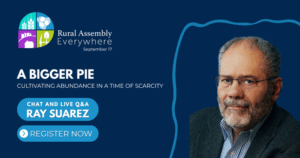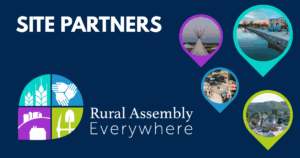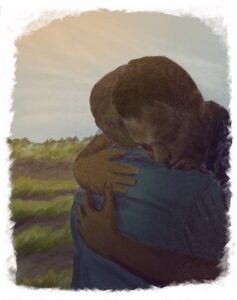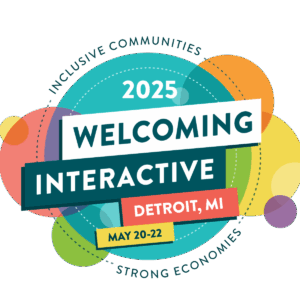Sara St. Laurent is a leader in the national service field and an independent consultant. Previously she served as the Vice President for Program Management at YouthBuild USA, where she oversaw national service work including the implementation of AmeriCorps and VISTA programs across a national field of 3000 young people and 80 programs. She also led the development of training and TA to create service as a career pathway opportunity for opportunity youth.
In most of the world, when you say the term “National Service,” it refers to conscripted military service – a national requirement for young people to serve in their country’s armed forces for some defined period of time. In 1990, the US co-opted the term when a new federal agency, the Corporation for National and Community Service (CNCS) and it’s more recognizable program, AmeriCorps, were created, to instead refer to a formal voluntary community service for a one-year term of service in a community or civic organization. This option of national service via formal community service offers a different kind of opportunity for transformation and career opportunity, particularly in otherwise underserved rural communities.
Most AmeriCorps members, about 70% according to CNCS, are 24 years old or younger. Despite having faced challenges, they are optimistic and believe they can transform their lives. It’s in this time of life that exposure to new ideas and experiences can really change the way that a young person works in diverse groups and often is the time in which they have their first real exposure to making an impact in something of consequence.
I am a bit of an AmeriCorps superfan. While I am not an alum myself, I worked for 17 years to implement the largest CNCS AmeriCorps National Direct grant in the country. We worked with 80 programs across the country, about 20 of which were in rural communities, to implement AmeriCorps. Our main service was building low-income housing, but the real impact of AmeriCorps at our programs was on the AmeriCorps members themselves. They were opportunity youth – young people who entered a program without a GED or HSD or a job, and wanted to change their lives. Having witnessed the transformation of so many young people from so many backgrounds, I can truly say that AmeriCorps is life-changing, and sometimes in unexpected ways.

The long-term impact of national service can change an individual and a community. When AmeriCorps members come from the rural community in which they serve, they often have the unique experience of transitioning from a service recipient – having been the beneficiary of community and social services themselves – to a service provider in their community. They have the profound experience of giving back and paying it forward. This shift is gradual – it begins the first time the complete a task that they didn’t think they could do – they made a call that felt intimidating, they taught a child a new skill, they built a wall in a home, they had their first patient interaction in a nursing home. It proceeds when an AmeriCorps member sees some tangible difference in their community that they made – a wheelchair ramp that was completed, a recreation space that was cleaned and made safe for use, a child who read a page by themselves for the first time, a neighbor who accessed healthcare affordably, or a healthcare facility that was able to provide more patient services. The pride in having made that impact, in being able to point to that thing as something they did, lays the groundwork for a swell of confidence, self-worth, and a desire to do the next thing, make the next impact. Over the course of the term of service, the member gains more experience and is seen in the community making this impact, not once, but over an extended period of time. This commitment to continued impact thus results in the community’s recognition of the value of this individual’s contribution to the improvement of the community. That change in public perception and acceptance is powerful. This flipping of the script from service recipient to service provider is transformational – it changes one’s own perspective of their value and worth, their ability to make an impact, their understanding of how the community sees them, and their ability to get things done.
As the member collects this tangible evidence of their impact over the course of the yearlong term of service, s/he also gathers valuable contacts – community members, funders, local employers. Additionally, their day-to-day service helps the member see, sometimes for the first time, that they are capable, that they are able to make a commitment to achieve some long-term goal, that they can envision a final outcome and then implement the steps to achieve the vision. Both this network of contacts and this belief in one’s own capability are key ingredients in an individual’s future career success. Volunteer service has a positive impact on employability, across all demographics, but particularly for rural members. AmeriCorps member exit surveys show that eight out of ten alumni say AmeriCorps benefited their career path. A 2013 CNCS Office of Research and Evaluation analysis found that volunteers living in rural areas have over 50 percent higher odds of finding employment after being out of work than non-volunteers. A CNCS-sponsored study in Arizona found that over 80 percent of organizations surveyed hired at least one AmeriCorps member since 2012. For many rural AmeriCorps members, their service experience transforms their options. They find that they don’t have to leave their community to be successful or to be seen as a leader. Instead, the service opportunity opens doors into social service and/or civic opportunities right where they are. To serve one’s community, to know that you have made a direct impact on the lives of your neighbors and your community, to choose to be change agent, is a path to changing your own life and opening yourself up to something larger than yourself.







